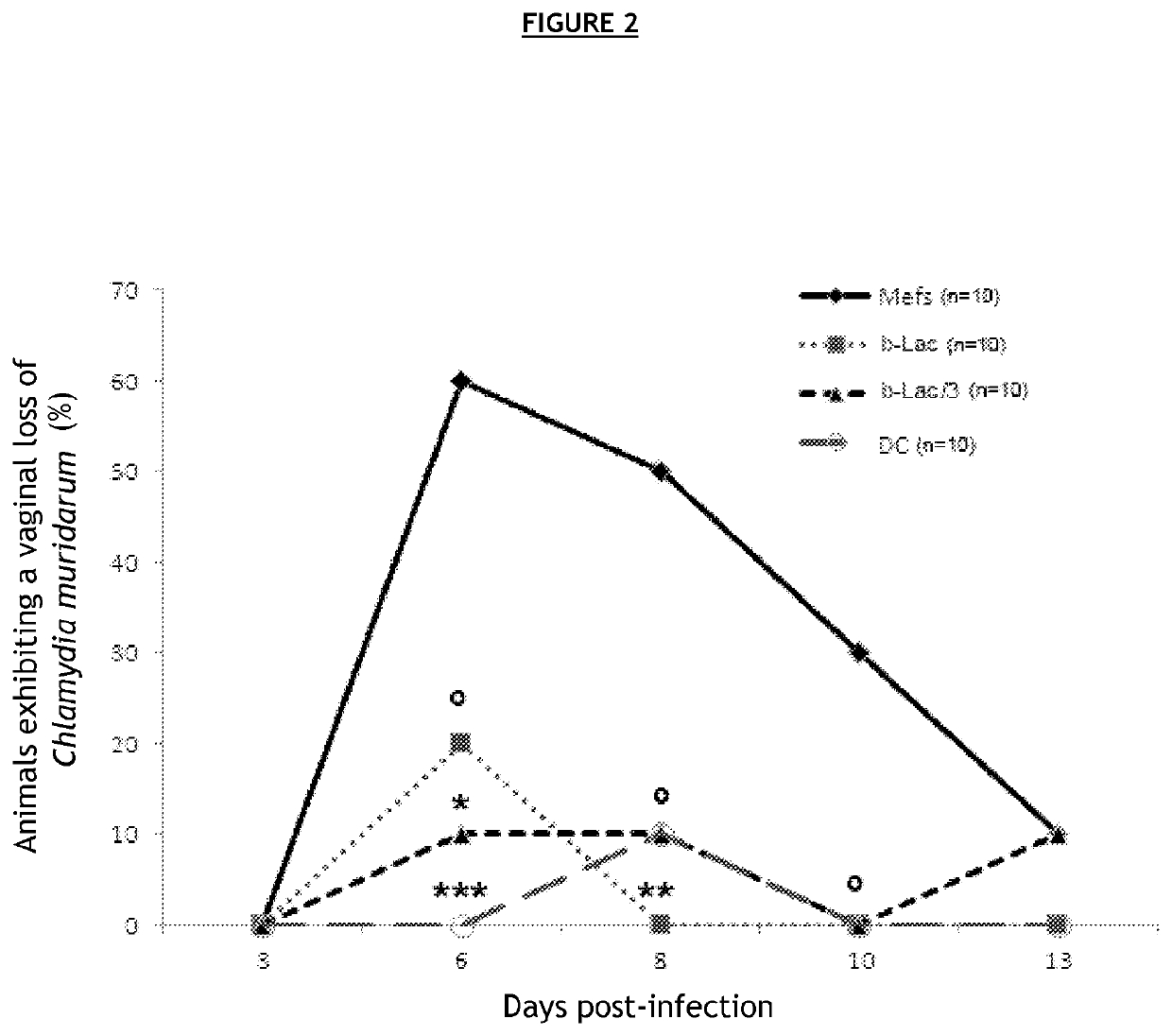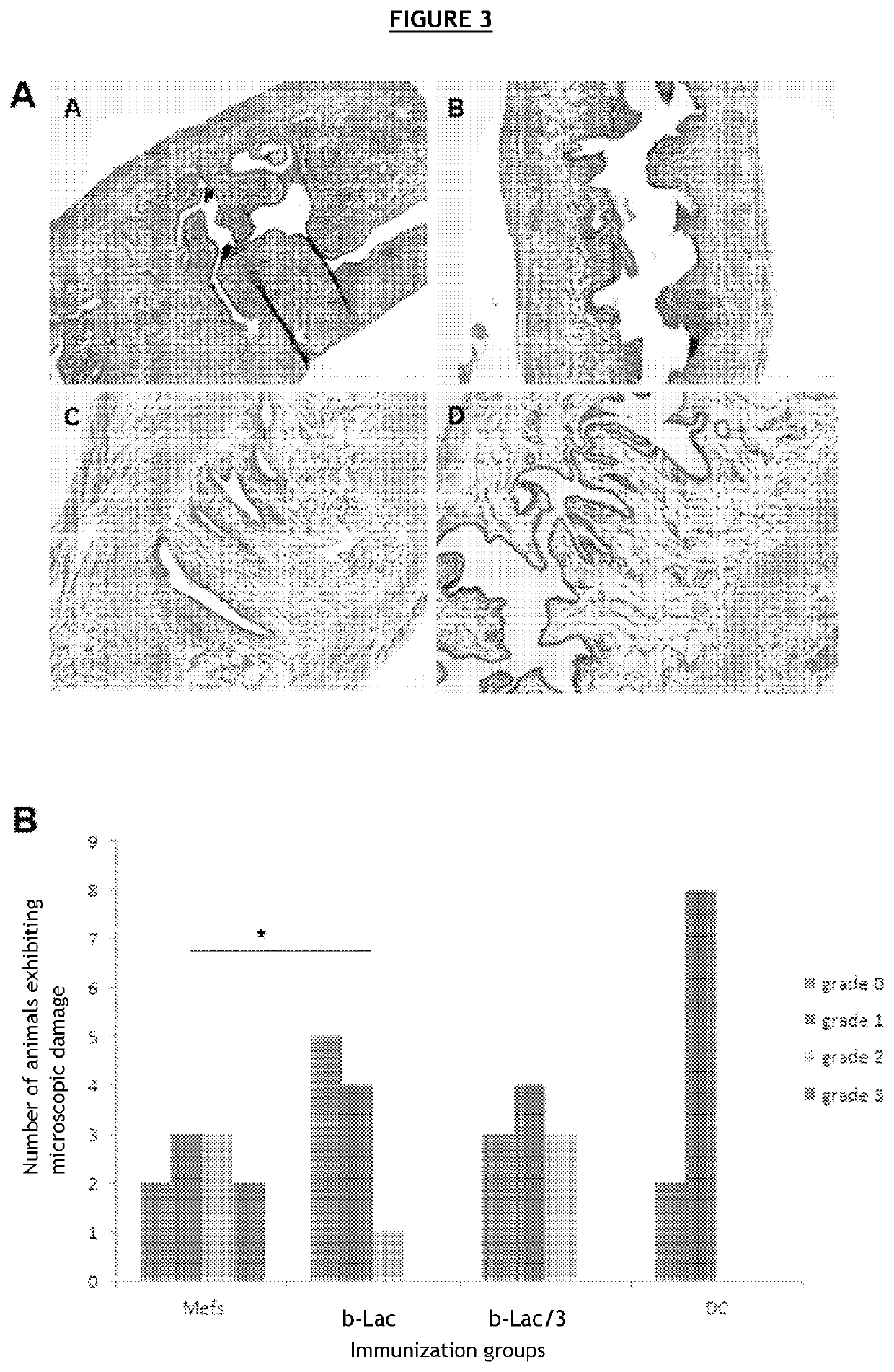Vaccine composition against chlamydiaceae infections
a technology of chlamydiae and composition, applied in the field of chlamydiae infection vaccine composition, can solve the problems of ineffective chlamydiae infection vaccine in humans, asymptomatic disease, and serious consequences of untreated infections
- Summary
- Abstract
- Description
- Claims
- Application Information
AI Technical Summary
Benefits of technology
Problems solved by technology
Method used
Image
Examples
example 1
ion of C57BL / 6J Mice
[0108]C57BL / 6J mice were vaccinated with different compositions, then secondarily infected with bacteria of the family Chlamydiaceae.
[0109]In order to avoid a host immune reaction related to the recognition of alloantigens carried by eukaryotic cells, the various bacterial forms (infectious, BL) were produced in embryonic fibroblasts derived from C57BL / 6J mice.
[0110]To that end, embryonic fibroblasts (MEF) derived from C57BL / 6 mice with Chlamydia muridarum (Cm) were infected in vitro. This strain is genetically very similar to Chlamydia trachomatis. It infects mice and guinea pigs but not humans, and causes the same physiopathological after-effects in the genital tract as in humans.
[0111]Several compositions were prepared[0112]C1—composition comprising an infectious form of Cm, also called virulent form (72-hour in vitro cell infection and sampling of the cell lysate)[0113]C2—composition comprising an infectious form inactivated 30 min at 56° C., also called heat...
example 2
fficacy of the BL Forms
[0130]In order to confirm the vaccine efficacy of the BL forms, a new experiment was carried out under the same conditions as in example 1.[0131]Mice 1-10: immunization with MEFs at D0, D10 and D21[0132]Mice 1-5: infection with 2·106 IFU at D39[0133]3 / 5 mice (60%) exhibit after-effects (tissue lesions of the upper genital tract)[0134]Mice 6-10: infection with 2·105 IFU at D39[0135]3 / 5 mice (60%) exhibit after-effects (tissue lesions of the upper genital tract)[0136]Mice 11-20: immunization with the infectious form first inactivated 10 min at 90° C. at D0, D10 and D21[0137]Mice 11-15: infection with 2·106 IFU at D39[0138]3 / 5 mice (60%) exhibit after-effects (tissue lesions of the upper genital tract)[0139]Mice 16-20: infection with 2·105 IFU at D39[0140]3 / 5 mice (60%) exhibit after-effects (tissue lesions of the upper genital tract)[0141]Mice 21-30: immunization with the BL form at D0, D10 and D21[0142]Mice 21-25: infection with 2·106 IFU at D39[0143]0 / 5 mice (...
PUM
| Property | Measurement | Unit |
|---|---|---|
| humidity | aaaaa | aaaaa |
| humidity | aaaaa | aaaaa |
| temperature | aaaaa | aaaaa |
Abstract
Description
Claims
Application Information
 Login to View More
Login to View More - R&D
- Intellectual Property
- Life Sciences
- Materials
- Tech Scout
- Unparalleled Data Quality
- Higher Quality Content
- 60% Fewer Hallucinations
Browse by: Latest US Patents, China's latest patents, Technical Efficacy Thesaurus, Application Domain, Technology Topic, Popular Technical Reports.
© 2025 PatSnap. All rights reserved.Legal|Privacy policy|Modern Slavery Act Transparency Statement|Sitemap|About US| Contact US: help@patsnap.com



